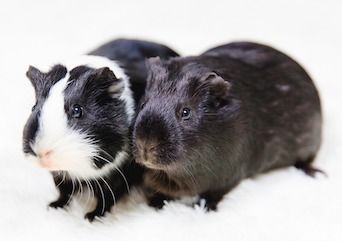Are There Adequate Resources for Rodent Medicine?
A new study finds that relatively few publications address the most common diseases.

Rodents are popular pets worldwide. In fact, veterinary practitioners in the United Kingdom currently rate rabbits and guinea pigs as the third and fourth most commonly treated small animal species, respectively.
UK researchers recently compared the most common presenting conditions of rabbits and guinea pigs with the availability of published resources for these topics.
Study Design
The investigators surveyed members of the Royal College of Veterinary Surgeons to evaluate the 4 most frequently treated species and top 3 conditions or complaints for each. Practitioners were also asked about their perceptions of the amount of information available for each condition, ranging from “none” to “a lot.”
RELATED:
- Guinea Pigs Show Resistance to Rhodococcus equi Infection
- Exotic Animals: Getting the Most from a Patient History
The investigators then categorized the conditions and complaints by body system. They also conducted literature searches for guinea pig and rabbit medicine topics, and citations were categorized by body system. Due to time constraints, they limited rabbit citations to every eighth year, while all years were searched for guinea pigs.
Results
Nearly 5000 veterinarians throughout the United Kingdom completed the survey. Of these, 2170 (54.5%) and 682 (17.1%) commonly treated rabbits and guinea pigs, respectively. In order, the top 3 most common body systems treated in rabbit patients were dental, skin, and gastrointestinal. Skin, nonspecific, and dental were the top 3 body systems treated for guinea pigs.
In general, respondents perceived that “a lot” of published information was available for only 18.6% of listed rabbit conditions and complaints, whereas most conditions had “some” or “a little” information. Veterinarians perceived even less information to be available for guinea pig medicine, with only 4.9% of conditions having “a lot” of resources. Instead, they reported that only “a little” information was available for approximately one-half of conditions. In general, veterinarians perceived more information to be available for the most common guinea pig conditions compared with rabbit conditions.
A total of 547 and 620 English-language citations were analyzed for rabbit and guinea pig medicine, respectively. In general, the number of citations per year increased with time, and over 200 different publications or journals were represented for each species. Approximately 80% to 85% of publications for each species focused on a single body system, while the remainder addressed general topics, such as anesthesia.
Dental and skin conditions in rabbits accounted for over half of reported conditions by veterinarians, yet represented only 13% of available literature citations. A similar mismatch between veterinarian-reported diseases and publication topics was noted for guinea pigs. The majority of citations for both species described primary research, such as case studies and clinical trials, and only 10% were written with a pet focus.
Take-home Message
Available literature resources for rabbits and guinea pigs are limited compared with the popularity of these 2 species in UK veterinary practice. Furthermore, the perceived and actual number of resources was lower for guinea pigs than rabbits. “Future research,” the authors noted, “should focus on generating new, high-quality research guided by the needs of veterinarians and pet owners.”
Dr. Stilwell received her DVM from Auburn University, followed by a MS in fisheries and aquatic sciences and a PhD in veterinary medical sciences from the University of Florida. She provides freelance medical writing and aquatic veterinary consulting services through her business, Seastar Communications and Consulting.
UN, WHO address public health concern over avian flu transmission to humans
April 18th 2024Veterinary professionals working with certain animals are advised to take precautionary steps to minimize risk of infection, while researchers in Texas study potential H5N1 vaccines, antivirals, and antibody therapies for humans
Read More